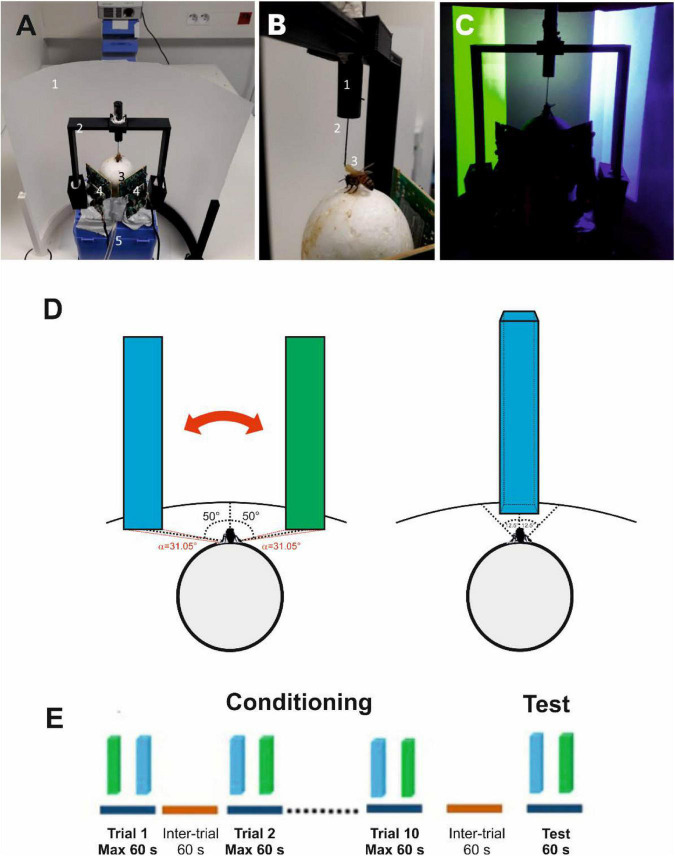FIGURE 1.
Experimental setup, choice criterion and conditioning procedure. (A) Global view of the setup. 1, semicircular projection screen made of tracing paper; 2, holding frame to place the tethered bee on the treadmill; 3, the treadmill was a Styrofoam ball positioned within a cylindrical support (not visible) floating on an air cushion; 4, infrared mouse optic sensors allowing to record the displacement of the ball and to reconstruct the bee’s trajectory; 5, air arrival. The video projector displaying images on the screen from behind can be seen on top of the image. (B) The tethering system. 1, plastic cylinder held by the holding frame; the cylinder contained a glass cannula into which a steel needle was inserted; 2, the needle was attached to the thorax of the bee; 3, its curved end was fixed to the thorax by means of melted bee wax. (C) Color discrimination learning in the VR setup. The bee had to learn to discriminate two vertical bars based on their different color and their association with reward and punishment. Bars were green and blue on a dark background. Color intensities were adjusted to avoid phototactic biases independent of learning. Displacement of the bars was restricted to the 2D plane in front of the bee. (D) Left: view of the stimuli at the start of a trial or test. The green and the blue virtual bars were a presented at –50° and + 50° of the bee’s longitudinal axis of the bee. Stimuli could be only displaced by the bee from left to right and vice versa (double red arrow). The red angles on the virtual surface indicate the visual angle subtended by each bar at the bee position (α = 31.05°). Right: Choice of a bar. A choice was recorded when the bee kept the center of the object between –12.5° and + 12.5° in front of it for 1 s. The bar image was then frozen during 8 s and the corresponding reinforcement (US) was delivered. (E) Conditioning protocol. Bees were trained along 10 conditioning trials that lasted a maximum of 1 min and that were spaced by 1 min (intertrial interval). After the end of conditioning, and following an additional interval of 1 min, bees were tested in extinction conditions during 1 min.

